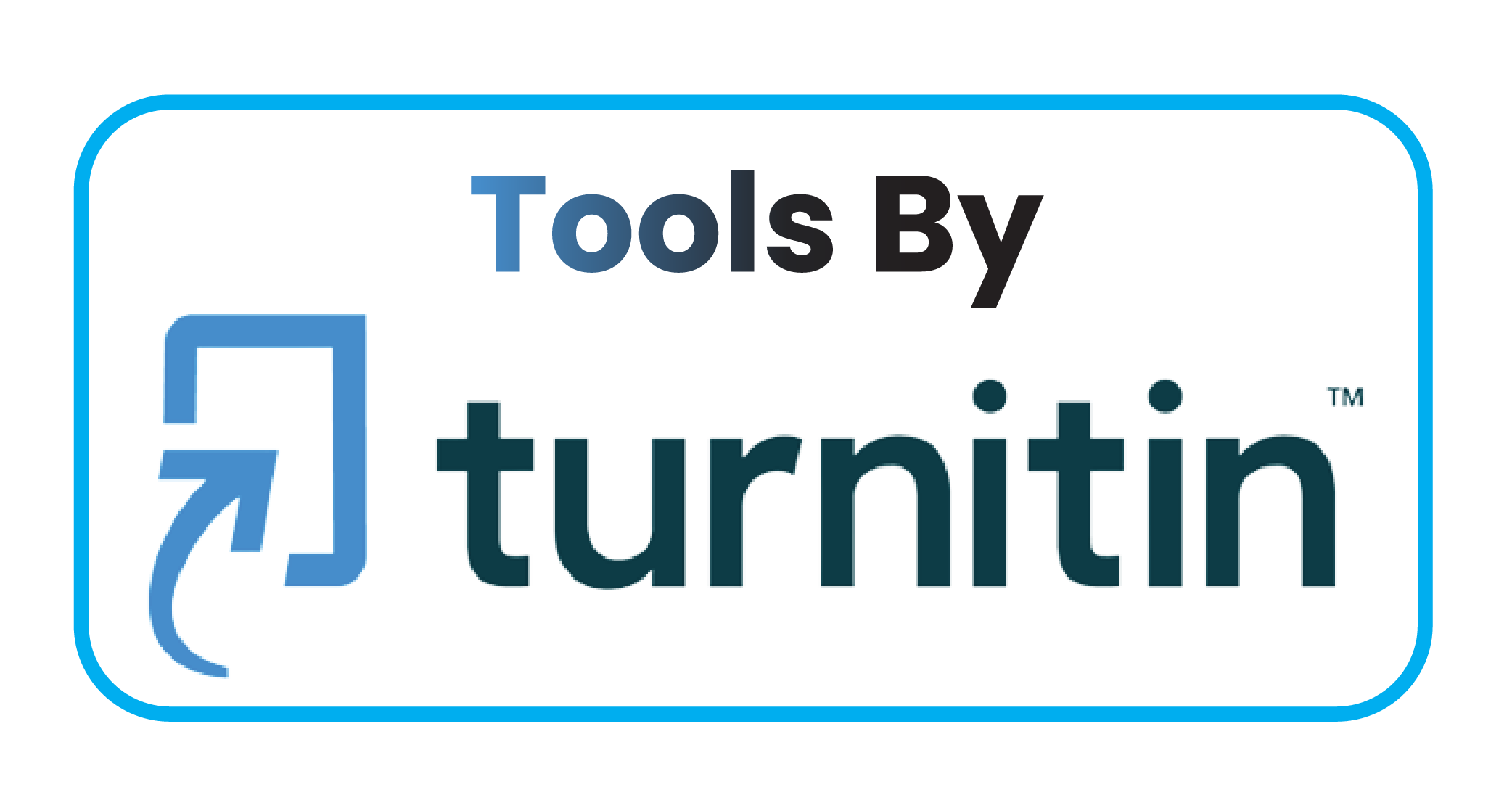The Influence of Adding Api-Api Mangrove Leaf Extract as an Immunostimulant on Vaname Shrimp Against Vibriosis Disease Caused by Vibrio parahaemolyticus Bacteria
DOI:
https://doi.org/10.59888/ajosh.v1i12.130Keywords:
Avicennia Alba, Immunostimulant, Vaname Shrimp, Vibrio ParahaemolyticusAbstract
Vanname shrimp cultivation is one of the most developed aquacultures in Indonesia and makes it one of the commodities with the highest foreign exchange inputs for the Indonesian state from the fisheries sector. Disease attack is one of the main causes of failure in vaname shrimp culture, especially disease attacks caused by Vibrio parahaemolyticus bacteria. Avicennia alba mangrove leaf extract is known to have active compounds that can act as antibacterial. This research was conducted by mixing Avicennia alba mangrove leaf extract with doses of 150 ppm (VA), 250 ppm (VB) and 350 ppm (VC) into commercial feed by re-pelletting. Positive control (KV+) treatment used commercial vitamins added to the feed. The vaname shrimp used was 60 days old with an average initial weight of 8.9 grams. The aquariums used were 15 pieces with a size of 60 x 30 x 40 cm and a volume of 54 liters of water. The white shrimp challenge test with Vibrio parahaemolyticus bacteria with a concentration of 106 Cfu/ml as much as 0.2 ml. The clinical symptoms of white vaname shrimp include pale white hepatopancreas, blackened tail, grippy swimming legs, necrosis in some parts of the body, necrosis of the tail, blackened and necrotic rectum, broken intestines that are partially brown and starting to turn white, empty intestines, presence of white feces. appears in the aquarium, decreased appetite, as well as not actively swimming. The results showed that Avicennia alba leaf extract had an effect on absolute weight growth (W), growth rate (GR), specific growth rate (SGR), survival rate (SR), total haemocyte count (THC) and phagocytic activity of white shrimp. The dose of 350 ppm VC treatment was the most influential dose as an immunostimulant in this study.
References
Adiyana, K., Anandasari, R. V., Wahyuni, T. & Thesiana, L., 2017. Kondisi Kualitas Air dan Respon Pertumbuhan Pada Pemeliharaan Udang Vaname (Litopenaeus vannamei) Menggunakan Sumber Energi Surya. Jakarta, Badan Penelitian dan Pengembangan kelautan dan Perikanan.
Assani, S., 1994. Mikrobiologi Kedokteran. Jakarta: Fakultas Kedokteran Universitas Indonesia.
Darwantin, K., Sidik, R. & Mahasri, G., 2016. Efisiensi Penggunaan Imunostimulan Dalam Pakan Terhadap Laju Pertumbuhan, Respon Imun Dan Kelulushidupan Udang Vanamei (Litopenaeus vannamei). Jurnal Biosains Pascasarjana, Volume 18, pp. 1-17.
Datu, S. S., 2017. Skrining Antibakteri Ekstrak Sargassum sp. Terhadap Bakteri Vibrio parahaemolyticus Dan Vibrio harveyi, Makassar: UNIVERSITAS HASANUDDIN.
Effendie, M. I., 1979. Metode Biologi Perikanan. Jakarta: Gramedia Pustaka Utama.
Effendy, S. R. A. & Akbar, T., 2004. Peningkatan Hemosit Benur Udang Windu (Penaeus monodon Fabricus) Pasca Perendaman Ekstrak Ragi Roti (Saccharomyces cerevisiae) Pada Konsentrasi Yang Berbeda. Jurnal Sains dan Teknologi, 14(2), pp. 46-53.
Ekawati, A., Nursyam, H., Widjayanto , E. & Marsoedi, M., 2012. Diatomae Chaetoceros ceratosporum dalam Formula Pakan Meningkatkan Respon Imun Seluler Udang Windu (Penaeus monodon Fab.). The Journal of Experimental Life Science, 2(1), pp. 20-28.
Fitri, Z. M., K. & Mubarak, A. S., 2018. Daya Antibakteri Ekstrak Daun Api-Api (Avicennia alba) terhadap Vibrio harveyi Penyebab Vibriosis secara Invitro. Jurnal Ilmiah Perikanan dan Kelautan, 10(2), pp. 131-136.
GOAL, 2018. Goal Aquaculture Alliance: World Shrimp Aquaculture (Including Rosenbergii) by Species. s.l.:s.n.
Hasbiah, Dwyana, Z. & Haedar, N., 2015. Potensi Beberapa Isolat Probiotik Sebagai Antibakteri Terhadap Pertumbuhan Vibrio sp.. Universitas Hasanuddin, pp. 1-9.
Helda, Y., Harpeni, E. & Supono, S., 2018. Aplikasi Ekstrak Daun Ketapang (Terminalia catappa L.) Terhadap Udang Vaname (Litopenaeus vannamei) Yang Terinfeksi Penyakit White Feces Disease (WFD). Jurnal Sains Teknologi Akuakultur, 2(2), pp. 7-15.
Jannah, M., Junaidi, M., Setyowati, D. N. & Azhar, F., 2018. Pengaruh Pemberian Lactobacillus sp. Dengan Dosis Yang Berbeda Terhadap Sistem Imun Udang Vaname (Litopenaeus vannamei) yang Diinfeksi Bakteri Vibrio parahaemolyticus. Jurnal Kelautan, 11(2), pp. 140-150.
Johansson, M. W. & Soederhall, K., 1989. Celluler Immunity In Crustaceans And The proPO System. Parasitology Today, 5(6), pp. 171-176.
Lantah, P. L., Montolalu, L. A. & Reo, A. R., 2017. Kandungan Fitokimia Dan Aktivitas Antioksidan Ekstrak Methanol Rumpu Laut Kappaphycus alvarezii. Jurnal Media Teknologi Hasil Perikanan, 5(3), pp. 167-173.
Lee, M. H. & Shiau, S. Y., 2004. Vitamin E Requirements of Juvenile Grass Shrimp, P. monodon and Effects on Nonspecifc Immune Responses. Fish & Shellfsh Immunology, Issue 16, pp. 475-485.
Liu, C.-H. & Chen, J.-C., 2004. Effect of Ammonia on the Immune Response of White Shrimp Litopenaeus vannamei And Its Susceptibility to Vibrio alginolyticus. Fish & Shellfish Immunology, Volume 16, pp. 321-334.
Manoppo, H. et al., 2011. Peningkatan Respon Imun Non-Spesifik, Resistensi, dan Pertumbuhan Udang vaname (Litopenaeus vannamei) Melalui Pemberian Pakan Nukleotida. Jurnal Akuakultur Indonesia, I(10), pp. 1-7.
Marbun, J., Harpeni, . E. & Wardyanto, W., 2019. Penanganan penyakit white feces pada udang vaname Litopenaeus vannamei menggunakan aplikasi pakan yang dicampur ekstrak lengkuas merah Alpinia purpurata k. schum. Jurnal Ilmu-Ilmu Perairan, Pesisir dan Perikanan, 8(2), pp. 76-86.
Mastan, S., 2015. Use of Immunostimulants in Aquaculture Disease Management. International Journal of Fisheries and Aquatic Studies, 2(4), pp. 277-28.
Muliani, B. R., T. & Atmomarsono, M., 2003. Penyebaran dan Prevalensi White Spot Syndrome Virus (WSSV) pada Budidaya Udang Windu (Penaeus monodon). Jurnal Riset Aquaculture, 2(2), pp. 231-241.
Nuhman, 2009. Pengaruh Prosentase Pemberian Pakan Terhadap Kelangsungan Hidup dan Laju Pertumbuhan Udang Vanname (Litopenaeus vannamei). Jurnal Ilmiah Perikanan dan Kelautan, 1(2), pp. 193-197.
Nurhijrah, S., 2019. Kinerja Pertumbuhan Udang Vaname (Litopenaeus vannamei) yang Diberi Pakan dengan Penambahan Mannanoligosakarida (MOS), Makasar: Universitas Muhammadiyah Makasar.
Putri, F. M., 2012. Pengaruh Penambahan Spirulina sp. dalam Pakan Buatan Terhadap Jumlah Total Hemosit dan Aktivitas Fagositosis Udang Vaname (Litopenaeus vannamei), Semarang: Universitas Diponegoro.
Putri, F. M., S. & S., 2013. Pengaruh Penambahan Spirulina sp. dalam Pakan Buatan Terhadap Jumlah Total Hemosit dan Aktivitas Fagositosis Udang Vaname (Litopenaeus vannamei). Journal of Aquaculture Management and Technology, 2(1), pp. 102-112.
Rahmanto, S., Sarjito, D. & Chimawati, 2014. Karakterisasi dan Uji Postulat Koch Bakteri Genus Vibrio yang berasal dari Media Kultur Massal Mikroalga. Journal of Aquaculture Management and Technology, 3(4), pp. 230-237.
Rauf, A., Haeria & Anas, D. D., 2016. Efek Imunostimulan Fraksi Daun Katuk (Sauropus androgynus L. Merr.) Terhadap Aktivitas Dan Kapasitas Fagositosis Makrofag Pada Mencit Jantan (Mus Musculus). Jurnal FIK UINAM, 4(1), pp. 9-15.
Rusadi, D., Wardiyanto & Diantari, R., 2019. Treatment Of Vibriosis Disease (Vibrio harveyi) In Vaname Shrimp (Litopenaeus vannamei, Boone 1931) Using Avicennia alba Leaves Extract. Rekayasa dan Teknologi Budidaya Perairan, 8(1), pp. 909-916.
Sahrijanna, A. & Sahabuddin, 2014. Kajian Kualitas Air Pada Budidaya Udang Vaname (Litopenaeus vannamei) dengan Sistem Pergiliran Pakan di Tambak Intensif. Prosiding Forum Inovasi Teknologi Akuakultur, pp. 313-320.
Samuria, S. A., Nur, I. & Hamzah, M., 2018. Pengaruh Ekstrak Daun Mangrove (Avicennia marina) terhadap Ketahanan Tubuh Udang Vaname (Litopenaeus vannamei ). Jurnal Sains dan Inovasi Perikanan, 2(2), pp. 49-54.
Saptiani, G., Asikin, A. N., Ardhani, F. & Hardi, E. H., 2018. Tanaman Bakau Api-api Putih (Avicenia marina) Berpotensi Menghambat Mikrob Patogen dan Melindungi Post Larva Udang Windu. Jurnal Veteriner, 19(1), pp. 45-54.
Sasongko, J., 2016. Pencapaian Produksi Udang 2016 Proyeksi Produksi 2017. Shrimp Club Jawa Barat dan Banten, pp. 1-8.
Sumeru, S. U. & Anna, S., 1992. Pakan Udang Windu (Penaeus monodon). Yogyakarta: Kanisius.
Sumini, S. & Kusdarwati, R., 2020. The Discovery of Vibrio harveyi on Litopenaeus vannamei Infected White Feces Disease in Situbondo, East Java. Jurnal Perikanan Universitas Gadjah Mada, 22(1), pp. 9-18.
Tampangallo, B. R. & Susianingsih, E., 2011. Total Sel Hemosit Udang Windu (Penaeus monodon) Yang Dipapar dengan Bakteri Vibrio harveyi. Maros, Balai Riset Perikanan Budidaya Air Payau Maros Sulawesi Selatan, pp. 595-599.
Van De Braak, K., 2000. Haemocytic Defence in Black Tiger Shrimp (Penaeus monodon), Germany: Van Wareningen Universiteit.
Downloads
Published
Issue
Section
License
Copyright (c) 2023 Anjani Arum Mahenda, Misbakhul Munir, Dian Sari Maisaroh

This work is licensed under a Creative Commons Attribution-ShareAlike 4.0 International License.
Authors who publish with this journal agree to the following terms:
- Authors retain copyright and grant the journal right of first publication with the work simultaneously licensed under a Creative Commons Attribution-ShareAlike 4.0 International. that allows others to share the work with an acknowledgement of the work's authorship and initial publication in this journal.
- Authors are able to enter into separate, additional contractual arrangements for the non-exclusive distribution of the journal's published version of the work (e.g., post it to an institutional repository or publish it in a book), with an acknowledgement of its initial publication in this journal.
- Authors are permitted and encouraged to post their work online (e.g., in institutional repositories or on their website) prior to and during the submission process, as it can lead to productive exchanges, as well as earlier and greater citation of published work.










